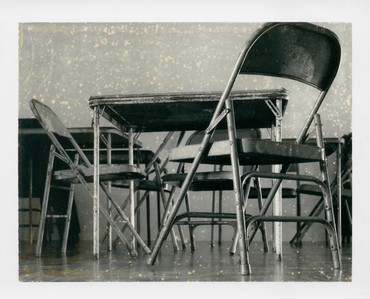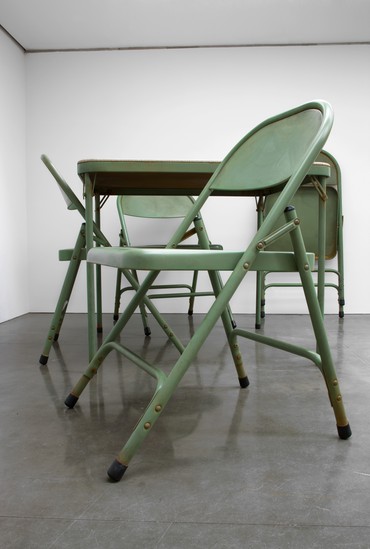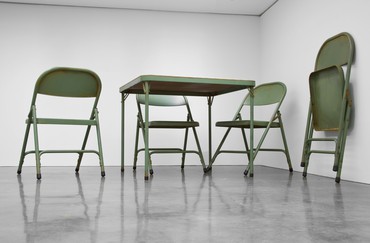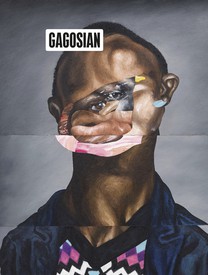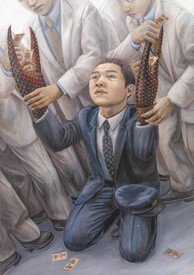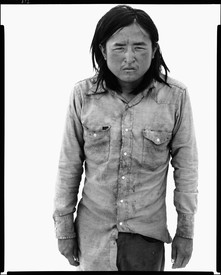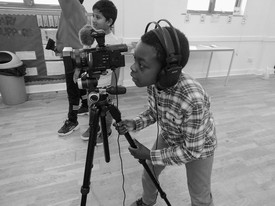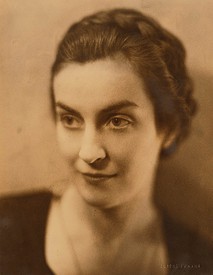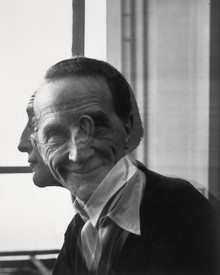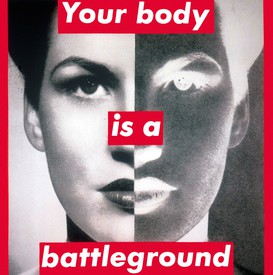
Blake Gopnik is an art critic based in New York. He is a regular contributor to The New York Times and is the author of Warhol, a comprehensive biography of the Pop artist (Ecco, 2020).
Think, for a minute, about the difference between a horror-movie housefly nine feet high and a normal housefly seen through a microscope. What we perceive in both cases is pretty similar: those faceted eyes, barbed legs, and voracious jaws completely fill our field of vision. But the effect is utterly different. One is about spectacle and scale and a fantastical world that’s out of whack. The other is about information and understanding and our desire to explore the real world all around us.
A decade ago, when Robert Therrien first showed a folding card-table whose top soared high above our heads, with four folding chairs scaled to match, I think many viewers read them as props from the latest sequel to Honey, I Shrunk the Kids. After all, Therrien has long worked in Tinseltown, so reading his objects in terms of spectacle and fakery—as a bid for Hulk-sized impact—would have seemed to make sense. But however likely such a reading might be, I don’t think it does justice to the subtlety of Therrien’s art. There is something almost devotional in the utter perfection of the rust stains on his sheet-metal chairs—the way the rust gathers around hinges and joints, leaving flat surfaces less affected. We feel Therrien’s respect for the just-cheap-enough Masonite that gets conjured on his table’s underside. His commitment to accurate reproduction, and therefore to respecting the integrity of the things reproduced, has a quiet, even contemplative quality that denies a connection to blockbusterism. Anyone who has spent time with Therrien himself—as thoughtful and retiring a character as you could hope to meet—would have a hard time imagining him having flashy impact as his goal.
The essence of Therrien’s practice comes even clearer through the standard but inapt comparison between his Brobdingnagian sculptures and the Pop enlargements of Claes Oldenburg. Oldenburg left out a lot of detail in his classic oversize pieces, so you could instantly tell that his seventeen-foot-tall shuttlecocks, for instance, were sculptures shaped like sports equipment but scaled up to fill the role of monument. Bigness was meant to be instantly tangible, and stylization helped do the trick: objects whose goal is to seem vast and impressive rarely fuss the little details that small objects do. (Think of the monumental sculptures of Roman emperors versus the life-size funerary portraits of those emperors’ subjects.) With Therrien’s modest furniture, on the other hand, bigness can seem almost incidental. The size of his table and chairs can be thought of as a by-product, even a necessary evil, in his attempt to give us maximum information about his subject—to make table-and-chair-ness unavoidably present.
Therrien’s enlargements may offer the best model for an art that is truly about documentation at its most thorough. After at least a century of flagrant neglect, whatness has at last got back its place at the table.
If my reading is right, it ties Therrien into a vitally important function of art that writers have tended to neglect, either in favor of form (what a picture looks like) or of semantics (how to read it). Before a picture works at those levels, however, it points out something in the world and tells us that it’s worth our attention: depiction is first of all about “ostension,” to borrow a term from philosophy. With ostension, what matters is not how you have chosen to depict something, or how it might be interpreted, but the simple fact that you have chosen it for depiction. The pointing finger of art can be dressed up any which way—in the simple planes of an icon, the high realism of Leonardo, or the dots of a Monet—and it still does its job so long as it manages to say nota bene. That is what a microscope does when it lets us take note of the hairs on a fly.
It’s also what so much modern art has led us away from. An Oldenburg Shuttlecock is much less about noting a badminton birdy than about the power and wit of sculpture; in the best tradition of the modernist mainstream, it’s about transformation, not presentation. That’s why Oldenburg’s gigantism is a false friend to Therrien’s enlargements, while Andy Warhol’s first soup cans are their true antecedent, despite being so very much smaller.
The magnification in his furniture just multiplies the amount of information at hand and our opportunities to access it.
When Warhol’s Campbell soups first appeared on the scene, they came across as absolutely nothing more than ostension—as just pointing to the contents of our larders. They were reviled and ridiculed for their rejection of transformation, and were treated as a kind of absurdist joke. Only a very few brave critics understood that, after a century of obsession with style and abstraction, it was time for a return to an earlier tradition of content-for-content’s-sake.
Therrien’s oversize sculptures may represent the maximum in ostensive power. The 2-D imagery that Western art has privileged for the last few centuries has limited the artist to a single point of view, meaning it can only point to the aspects of an object that face the picture’s audience. (And no, Cubism did not solve the problem: it just gave us more single views onto smaller bits of a scene.) Flat pictures have also encouraged us to see them as patterns and surfaces whose virtue lies in their look, rather than as access points on a world that might just as easily have been rendered differently. Whereas, as old master sculptors always argued, a 3-D depiction gives a richer opportunity to get to know the sheer whatness of the subject at hand. Therrien can point out to us both the black-rubber glides on his chairs’ feet and the smooth arches at the top of their backs, both the underside of his table and the tiny wrinkles in the vinyl that covers it. The magnification in his furniture just multiplies the amount of information at hand and our opportunities to access it. As we walk around and under Therrien’s table and chairs, we register an ostension that knows no end. It’s as though the artist had a thousand index fingers to point with.
Yet the sheer perfection of Therrien’s simulations means he’s engaged in a kind of trompe l’oeil, and that’s a mode that has had a bad rap for some time. It has been seen as shallow and trivial trickery, a sleight of hand that has no goods to deliver. Therrien’s version, coming at what seems like the exhausted tail end of the tradition, may help us to rethink its origins and understand the appeal it once had. If depiction’s first goal is to point at the world, how better than by giving it to us complete and unaltered? And even enlarged, in Therrien’s case. Pending the arrival of immaculate macrophotographic virtual reality, Therrien’s enlargements may offer the best model for an art that is truly about documentation at its most thorough. After at least a century of flagrant neglect, whatness has at last got back its place at the table.
Frieze New York installation views, clockwise from top left: photo courtesy Dean Anes; Katy Kotiadis, photo Brandon Friedman; Seth Combs, Christine Brown, and Joseph Brown, photo Diane Brown; Mila Myles; Beckie Warren and Nina Blumberg, photo courtesy Beckie Warren; Emily Weiss, photo Alison Sweeney and DeWitt Stern Fine Art
Artwork © 2018 Robert Therrien/Artists Rights Society (ARS), New York

